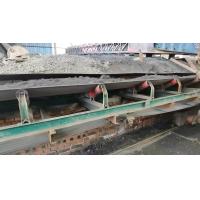Maximize Efficiency and Minimize Environmental Impact with the
Mobile Kiln
Overview
In today's rapidly evolving world, industries and artisans alike
are continually seeking more efficient, customizable, and
environmentally friendly solutions for their production needs. The
mobile kiln, a revolutionary innovation in the field of thermal
processing, embodies these principles by offering unparalleled
versatility and efficiency. This mobile kiln is designed to meet
the diverse needs of various industries, from pottery and ceramics
to agricultural waste management and biochar production, all while
minimizing environmental impact.
This article delves into the myriad features of the mobile kiln,
its wide range of applications, and addresses frequently asked
questions to provide a comprehensive understanding of its
capabilities and benefits.
Features
1. Customizability
- Adjustable Dimensions: The mobile kiln can be tailored to fit specific size requirements,
ensuring it meets the unique demands of different projects and
sites.
- Temperature Control: Advanced control systems allow for precise temperature
adjustments, facilitating optimal conditions for various types of
materials.
- Modular Design: The kiln can be modified with additional modules or attachments to
enhance functionality, such as additional burners, insulation
layers, or automated feeding systems.
- Fuel Flexibility: Compatible with multiple fuel sources, including wood, biomass,
and gas, offering flexibility based on availability and
cost-efficiency.
2. Efficiency
- High Thermal Efficiency: The kiln’s design ensures maximum heat retention and minimal fuel
consumption, reducing operational costs.
- Quick Setup and Breakdown: Designed for ease of transport and rapid assembly/disassembly, the
kiln can be relocated and operational within a short timeframe.
- Automated Controls: Integration of smart technology allows for automated monitoring
and control, optimizing performance and reducing the need for
constant supervision.
- Energy Recovery Systems: Incorporates systems to capture and reuse heat, further enhancing
overall energy efficiency.
3. Low Environmental Impact
- Reduced Emissions: Equipped with advanced combustion technology that minimizes
harmful emissions, contributing to a cleaner environment.
- Sustainable Materials: Constructed using eco-friendly materials that ensure durability
while minimizing environmental footprint.
- Waste Management: Capable of converting waste materials into useful byproducts, such
as biochar, which can enhance soil health and sequester carbon.
- Minimal Site Disturbance: Its mobile nature ensures that it can be used in various locations
without causing significant disruption to the site.

Applications
1. Ceramics and Pottery
- Artisanal and Industrial Production: Suitable for both small-scale artisans and large-scale ceramic
manufacturers, offering precise temperature control and uniform
heat distribution.
- Glazing and Firing: Ideal for different stages of ceramic production, from initial
firing to final glazing.
2. Agricultural Waste Management
- Biochar Production: Converts agricultural waste into biochar, which can be used to
improve soil fertility and sequester carbon.
- Composting Enhancer: Helps in the rapid decomposition of organic waste, aiding in
compost production.
3. Environmental Remediation
- Soil Remediation: Can be used to treat contaminated soils, breaking down pollutants
and restoring soil health.
- Waste Reduction: Efficiently processes various waste materials, reducing landfill
dependency.
4. Construction and Building Materials
- Brick and Tile Manufacturing: Ideal for producing high-quality bricks and tiles, ensuring
uniformity and strength.
- Lime and Cement Production: Capable of calcining limestone and other raw materials for lime
and cement production.
5. Research and Development
- Material Testing: Provides a controlled environment for testing new materials and
compounds at various temperatures.
- Pilot Projects: Suitable for small-scale pilot projects before scaling up
production.
FAQ
1. What types of fuel can the mobile kiln use?
The mobile kiln is designed to be fuel-flexible, accommodating a
variety of fuels such as wood, biomass, natural gas, and propane.
This versatility allows users to select the most cost-effective and
readily available fuel source for their needs.
2. How easy is it to transport and set up the mobile kiln?
The mobile kiln features a modular design that allows for easy
disassembly, transport, and reassembly. Depending on the model and
size, setup can be completed within a few hours to a day, making it
ideal for temporary sites or frequent relocations.
3. Can the kiln be used for continuous production processes?
Yes, the mobile kiln can be configured for continuous production
processes. With options for automated feeding and ash removal, it
can operate continuously with minimal supervision.
4. How does the mobile kiln minimize environmental impact?
The kiln is designed with advanced combustion technology to reduce
emissions and maximize fuel efficiency. Additionally, it is
constructed from sustainable materials and can convert waste into
valuable byproducts, contributing to a circular economy.
5. What safety features are included in the mobile kiln?
Safety is a top priority, and the kiln includes features such as
automatic shutoff mechanisms, temperature monitoring and control
systems, and robust construction to prevent accidents and ensure
safe operation.
6. What maintenance is required for the mobile kiln?
Regular maintenance includes checking and cleaning burners,
inspecting and replacing insulation as needed, and ensuring that
all automated systems are functioning correctly. Detailed
maintenance guidelines are provided with the kiln to ensure
longevity and optimal performance.
7. Is training provided for operating the mobile kiln?
Yes, comprehensive training is provided to ensure that operators
are fully equipped to handle the kiln safely and efficiently. This
includes both initial training and ongoing support as needed






